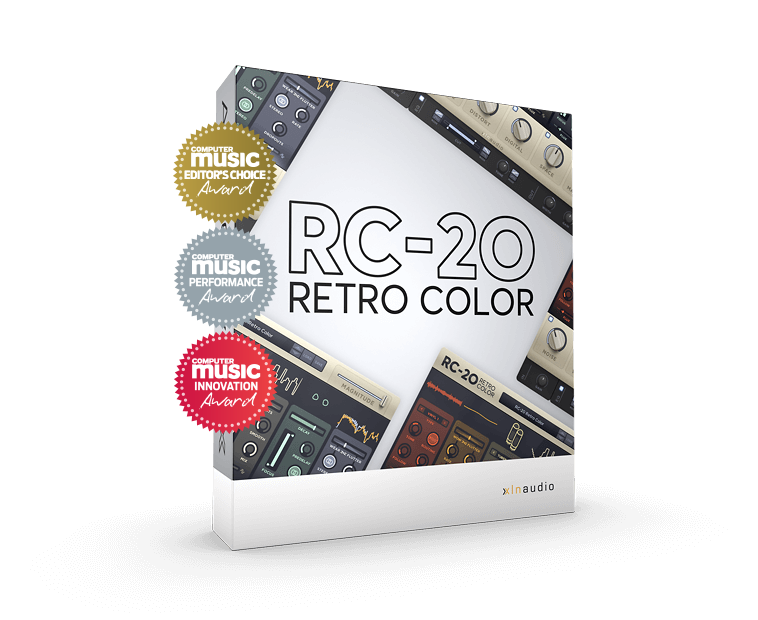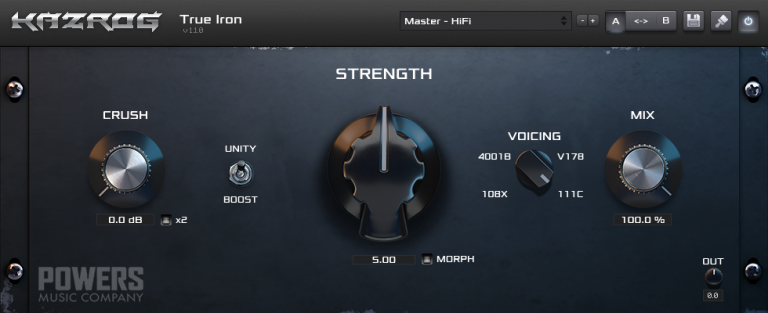听起来怎么样? 芯片粉碎机可以取得广泛的成果。下面是一些用例: 独特的破坏/破坏节拍,吉他或任何其他音轨。 播放单个命中并模拟旧采样器的声音。 在芯片声的输出中添加"精确污垢"。 将经典的 16 位控制台的"延迟/动词"模拟到轨道 芯片芯片器有四个主要组件:DAC编码、SPC 延迟、背景噪声和机柜。音频输入首先转到 DAC 编码。然后由 SPC 延迟处理,与背景噪音混合,最终发送到机柜阶段。当然,每个组件都可以按需绕过,而无需使音频静音。 1. DAC 编码 不仅仅是一个小问题 芯片芯片器的 DAC 编码对输入声音进行以下传递: 将主机采样率中的音频输入重新采样到用户指定的"虚拟"采样率。 使用 16 种不同的指定技术之一对该数据进行编码/解码。(请参阅下面的列表) 更改 DAC 中位的重量权重以模拟非单调行为。 对解码的数据进行过采样,以模拟特定 DAC 的行为。(零阶保持、PWM 等) 应用基本滤波:一极低通(RC 滤波器)和高通(交流耦合) 最后,它将结果向下采样回输出主机采样率。 简单编码 PCM(线性脉冲编码调制): 例如:光盘(如果 16 位/44.1kHz)、E-Mu SP12(12 位/27.5kHz)E-Mu SP1200(12 位/26.04kHz) FPCM(浮点脉冲码调制): 示例:用于雅马哈 4OP FM 合成器的 YM301X 系列 DAC 在 10.3 位上编码音频。 DPCM(差分脉冲编码调制): 示例:Big N 的 8 位控制台中使用的 RP2A03/RP2A07 CPU 提供的增量调制通道使用 Bits=6 和参数=1 自适应编码 BRR(比特率降低) 示例:SNES 的 S-DSP 中使用的特定 ADPCM 编码。 YADPCM : 示例:N 的"wii-mote"和各种雅马哈 FM 芯片,用于采样回放。 HAAR 变换: 三角形波形的独特混合。 A-μ法律: 示例:使用 AM6070/AM6072 IC 的早期美国采样器和鼓机(如 LINN 鼓机)和 E-MU 仿真器 I/II/鼓器。 对话: 示例:MSM(OKI)6295 用于 80 年代末和 90 年代早期街机标题(所有非 Q 音 CPS1 标题) CVSD(连续可变斜率增量调制): 示例:苏珊娜·恰尼在弹球经典《Xenon》中的声音 1 位密度编码 PWM(脉冲宽度调制): 示例:Apple II SoftDAC(3 和 4 位版本)和 DAC522 上的一些旧软件。你会发现他们是讨厌的声音。你被警告过 PDM(脉冲密度调制): 这通常以非常高的采样率运行,SACD/DSD 使用 2.8224 MHz,但由于这里只有直接的 PCM 输入,其速率取决于主机速率(通常为 44.1/48/96kHz),因此在较高频率下使用 PDM 是非常无用的,因为我们没有额外的信息来及时编码。 声乐编码 LPC10: 示例:说话和拼写 莫泽尔: 示例:贝尔泽克,不可能的任务 SP0256: 示例:Intellivoice,用于老式计算机的各种语音模块。 音球: 示例:真的吗? 2. SPC 延迟 这再现了SPC的延迟效果,这是负责洗样的质量,SPC给管弦乐配乐,如在最终幻想3。另一个众所周知的用途是超级马里奥世界和驴孔国家的洞穴效应。它有时也被滥用 - 特别是在格斗游戏,使用很短的长度和高反馈,试图使混响效果(徒劳)。 3. 背景噪音 噪音被仔细记录和循环从我们的齿轮集合(控制台和街机板),也用于芯片声音背后的研究。 只需选择预设并调整音量以品尝。注意:如果要保持默认卷的微妙性,应使用默认卷。 某些单元根据外部因素产生不同的噪音,例如,众所周知,Commodore 64 和 Vectrex 背景噪音与屏幕上特定时间显示的内容直接相关。 在这种情况下,有各种噪音可供选择。  HOW DOES IT SOUND? There is a wide spectrum of results achievable with chipcrusher. Here are a few use cases: Uniquely destroy/mangle a beat, a guitar or any other audio track. Play single hits and emulate the sound of old samplers. Add ‘accurate dirt’ to chipsounds’s output. Emulate a classic 16-bit console's "Delay/verb" to a track There are four main components in chipcrusher: DAC Encoding, SPC Delay, Background Noise and Cabinet. The audio inputs first go to the DAC Encoding. Then gets processed by the SPC Delay, mixed with the Background Noise to finally get sent to the Cabinet stage. Of course, each component can be bypassed on demand without muting the audio. 1. DAC Encoding More than a mere bitcrusher chipcrusher’s DAC Encoding does the following passes on the input sound: Resamples the audio input from the host’s sample rate to a user specified ‘virtual’ sample rate. Encodes/decodes that data by using one of 16 distinct specified techniques. (See the list below) Change the weighting of bits in the DAC to emulate non-monotonic behavior. Oversamples the decoded data to mimic the behavior of specific DACs. (Zero-Order Hold, PWM, etc) Applies basic filtering: one pole low pass (RC Filter) and high pass (AC Coupling) Finally it downsamples the result back into the output host sample rate. Simple Encodings PCM (Linear Pulse-Code Modulation): Examples: Compact Disc (if 16-bit/44.1kHz), E-Mu SP12 (12-bit/27.5kHz) E-Mu SP1200 (12-bit/26.04kHz) FPCM (Floating-point pulse-code modulation): Example: The YM301X series DAC used for Yamaha’s 4OP FM synthesizers encoded audio on 10.3-bits. DPCM (Differential pulse-code modulation): Example: Delta modulation channel provided by the RP2A03/RP2A07 CPUs used in the Big N’s 8-bit console uses Bits=6 and Parameter=1 Adaptive Encodings BRR (Bit Rate Reduction) Example: Specific ADPCM Encoding used in the S-DSP of the SNES. YADPCM : Examples: N’s ‘wii-mote’ and various Yamaha FM chips for sample playback. HAAR Transform: A unique blend of triangle waveforms. A-Law and μ-Law: Examples: Early US samplers and drum machines which used AM6070/AM6072 ICs like the LINN Drum machines, and the E-MU Emulator I/II/Drumulator. DIALOGIC: Example: MSM(OKI)6295 Used in LOTS of late 80′s and early 90′s arcade titles (All non Q-sound CPS1 titles) CVSD (continuously variable slope delta modulation): Example: Suzanne Ciani's voice in the Pinball classic 'Xenon' 1-bit Density Encodings PWM (Pulse-width modulation): Examples: Some legacy software on the Apple II SoftDAC (3 and 4-bit versions) and DAC522. You will find that they are NASTY sounding. You have been warned. PDM (Pulse-density modulation): This is usually run at VERY high sample rates, SACD/DSD uses 2.8224 MHz, but since here we only have straight PCM for input, whose rate depends on the host rate (typically 44.1/48/96kHz), it is quite useless to use PDM at higher frequency, since we don’t have extra information to encode in time. Vocal Encodings LPC10: Example: Speak & Spell MOZER: Example: Berzerk, Impossible Mission SP0256: Example: Intellivoice, Various speech modules for vintage computers. Vocoder: Example: Really? 2. SPC Delay This recreates the sound of the SPC's delay effect, which is responsible for the wash-like quality that the SPC gives to orchestral soundtracks such as in Final Fantasy 3. Another well known use is the cavern effect in Super Mario World and Donkey Kong Country. It is also sometimes misused – particularly in fighting games that used a very short length and high feedback to try to make a reverb effect(in vain). 3. Background Noise Noises were carefully recorded and looped from our collection of gear (consoles and arcade boards) which were also used for the research behind chipsounds. Just select the preset and adjust volume to taste. Note: default volumes should be used if you want to keep it subtle. Some units generate different noises depending on external factors, for instance, it is well known that the Commodore 64 and Vectrex background noises were directly related to what was displayed at a particular time on the screen. In this case various noises are available. Atari: 2600, STf, 800XL Bally Astrocade C64: Brown breadbox, C64C with 8580, through the RF C128 GameBoy: (DMG-1), Color (CGB) Gemini (Atari 2600 clone) Genesis 1 (using headphones – two levels), using the audio out, and the RF modulator Intellivision: I (RF), III (RF) Leisure Vision NES and VS arcade PCB Odyssey2 Casio PV1000 RF (good luck finding your own :) Sega Master System (RCA and RF) Super PacMan arcade PCB Vectrex (4 different display patterns) VIC-20 4. Cabinet How does it work? A very efficient convolution engine allows chipcrusher’s sound (which can be very harsh at times) to go through a few of the most well loved vintage gaming devices, computers or monitors. Each impulse gives a totally different tonal quality to the sound. The available impulses are split into 5 categories. Computers Speaker and Casings impulses of various PC clones but also three Apple classics, the Apple IIe and the Apple IIGS. |
 温暖和闪烁效果 SoundSpot Ravage v1.0.2 P
温暖和闪烁效果 SoundSpot Ravage v1.0.2 P 经典激励器 BBE Sound Sonic Sweet v4.6.0
经典激励器 BBE Sound Sonic Sweet v4.6.0  音频处理 Sugar Bytes Effectrix v1.4.8 PC
音频处理 Sugar Bytes Effectrix v1.4.8 PC 油腻香肠音频处理 Dada Life Sausage Fatte
油腻香肠音频处理 Dada Life Sausage Fatte 磁带骤停音效 StudioLinked Tape Stop v1.0
磁带骤停音效 StudioLinked Tape Stop v1.0 音频处理 Puremagnetik Eidolon v1.0.1 WiN
音频处理 Puremagnetik Eidolon v1.0.1 WiN 虚拟磁带机效果 Slate Digital Virtual Tap
虚拟磁带机效果 Slate Digital Virtual Tap 色彩效果器 XLN Audio RC-20 Retro Color v
色彩效果器 XLN Audio RC-20 Retro Color v 音频修复抛光 iZotope RX 10 Audio Editor
音频修复抛光 iZotope RX 10 Audio Editor  钢铁音乐之声效果 Kazrog True Iron v1.3.3
钢铁音乐之声效果 Kazrog True Iron v1.3.3 甜蜜声音处理 Analog Obsession SweetVox v
甜蜜声音处理 Analog Obsession SweetVox v 粒子效果器 Output Portal v1.2.1 PC/v1.2.
粒子效果器 Output Portal v1.2.1 PC/v1.2.